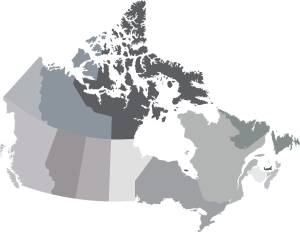9.1 Introduction to Occupational Health and Safety Legislation

All 14 of Canada’s jurisdictions, have occupational health and safety legislation—laws that grant rights to and impose duties upon workers and employers in order to reduce the level of workplace injury. In this chapter, we will review the responsibilities and the rights of workers, the legal implication of the legislation, and the relationship between safety laws and other pieces of legislation.
Beginning in the 1970s, the federal, provincial, and territorial governments all enacted legislation—laws—that regulate occupational health and safety (OHS). The distribution of powers under the Canadian constitution means Canada has 14 jurisdictions (federal, 10 provincial, and 3 territorial) when it comes to health and safety laws. Most employers and workers are covered by the occupational health and safety law of the province or territory in which they work. About 10% of the workforce is, however, covered by the occupational health and safety provisions in the federal government’s Canada Labour Code. The Canada Labour Code covers employees of the federal government. It also covers workers in industries that are, by their nature, interprovincial, such as banking, telecommunications, interprovincial transport, and uranium mining. Each jurisdiction has its own amalgam of acts, regulations, policies, and guidelines.
An act is a federal, provincial, or territorial law that sets out the broad legal framework around occupational health and safety in each jurisdiction.
A regulation typically sets out how the general principles of the Act will be applied in specific circumstances and is enforceable. Guidelines and policies are more specific rules about occupational health and safety. Other supporting guidance can be found in standards and codes. These documents provide employers with direction on health and safety implementation in the workplace. An example would be CSA Z795-03 which refers to the Coding of Work Injury or Disease Information and is published by the Canadian Standard Association (CSA) (Employment and Social Development Canada, 2016).
What Does the Law Say?
In Canada, the Canadian Labour Code, in particular, the Canadian Occupational Health and Safety Regulations, describe the provisions regarding employer and employee responsibilities.
Health and Safety is both a federal and provincial responsibility in Canada. In essence, Health Canada contributes to OHS issues by coordinating the Workplace Hazardous Materials Information System and by monitoring workplace radiation exposure. Health Canada also provides employee assistance services and occupational health services to federal employees.
Approximately 6% of the Canadian workforce falls under the OH&S jurisdiction of the federal government. The remaining 94% of Canadian workers fall under the legislation of the province or territory where they work.
In Ontario, the Occupational Health and Safety Act, dictates the best practices and steps to follow for both management and employees.
While each has its own role, the Ministry of Labour, Training and Skills Development, the Workplace Safety and Insurance Board (WSIB) and other Health partners all work together to support occupational health and safety in Ontario.
In matters of prevention, the Ministry of Labour, Training and Skills Development is responsible for monitoring compliance with the OHSA in ensuring that workplaces meet occupational health and safety requirements.
“10.1 Introduction to Occupational Health and Safety Legislation” from Human Resources for Operations Managers by Connie Palmer is licensed under a Creative Commons Attribution-NonCommercial-ShareAlike 4.0 International License, except where otherwise noted.

